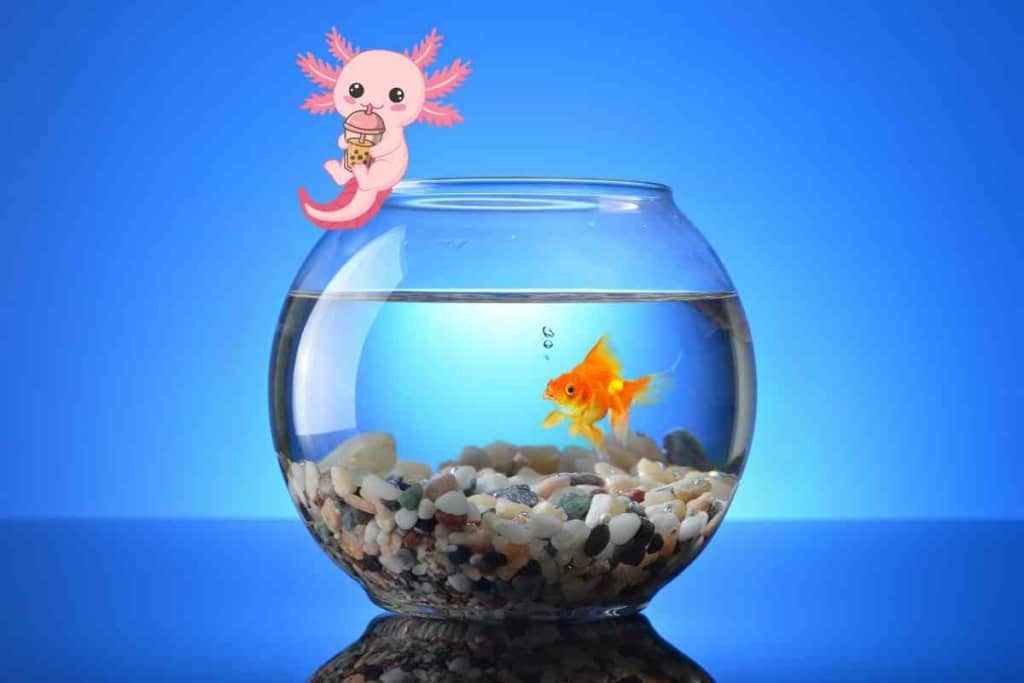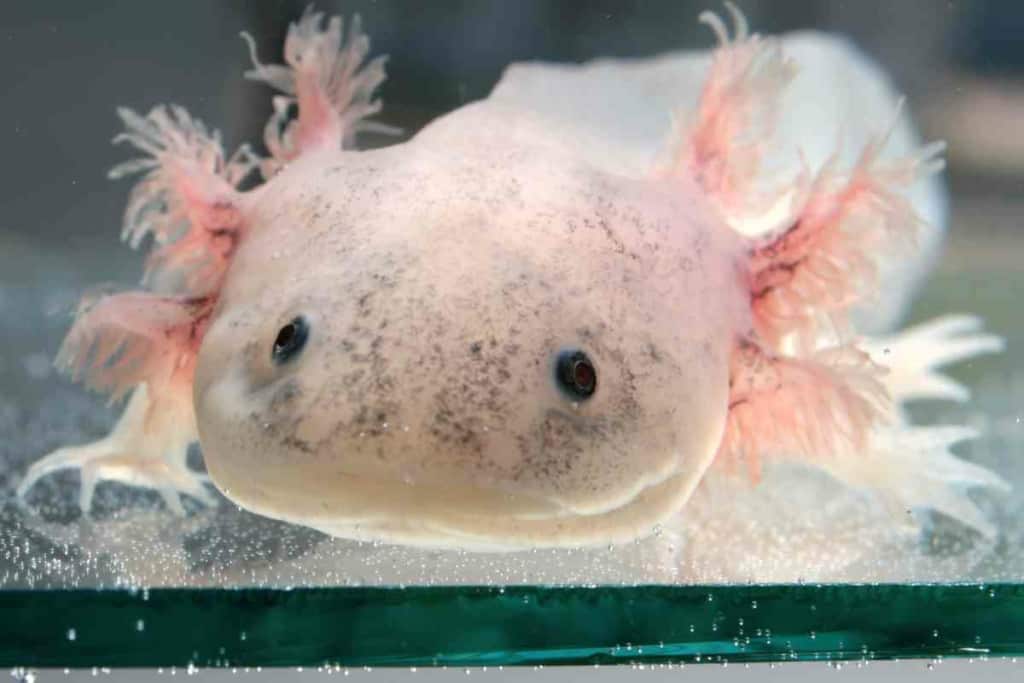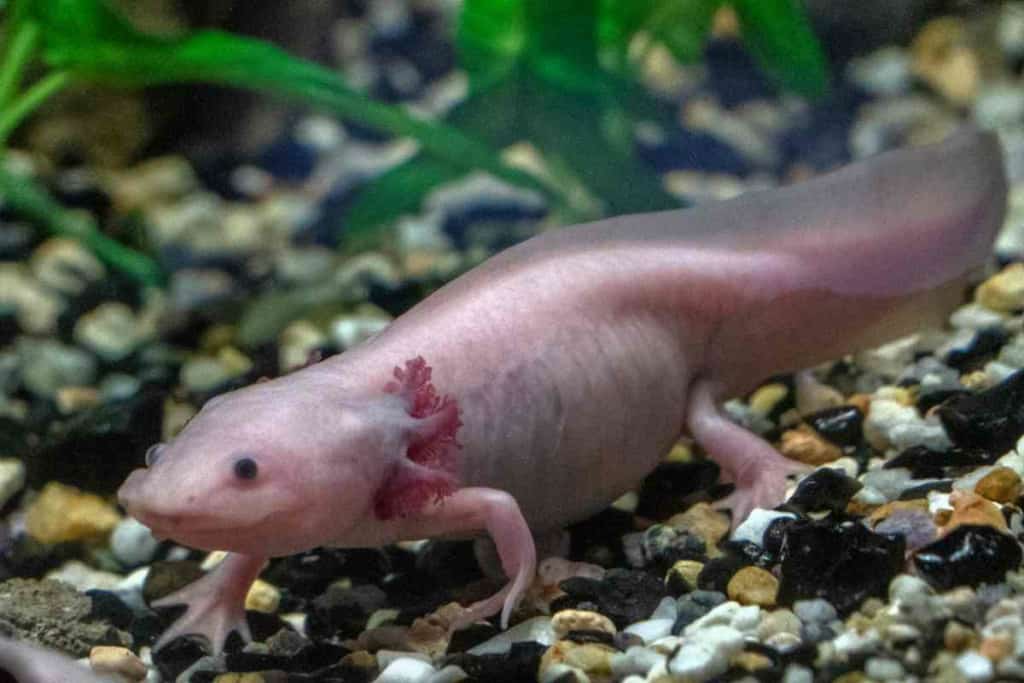Can Axolotls Come Out Of The Water? 4 Reasons Why They Shouldn’t
Axolotls are aquatic creatures, so they generally spend most of their time in the water. But what about on land? Can axolotls come out of the water?

Can Axolotls Come Out Of The Water?
Yes, axolotls can come out of the water. They can breathe out of the water, but not for long. An axolotl cannot survive outside its natural habitat for more than an hour. If you have a pet axolotl, it is better to keep it in water and not take them out without any purpose.
As axolotl owners, we understand that there are several downsides to retrieving an axolotl from its habitat.
First of all, it results in respiratory issues. Second, it causes dehydration, which weakens this little creature, and in some cases, it can also result in death. Here, we will discuss why taking an axolotl out of its habitat isn’t a good idea.
Downsides of Taking an Axolotl Out of Water

Respiratory Issues
As a unique and fascinating pet, axolotls have never been more popular. However, when retrieving them from the water, there is an important issue to be aware of: respiratory problems.
These amphibians can absorb oxygen through their skin while in water, but outside of it, they rely heavily on their gills for oxygen intake.
Suddenly moving them from water to air can cause respiratory distress, gasping, or even respiratory failure if not properly managed.
It’s crucial to slowly acclimate an axolotl to air before fully removing them from the water and to closely monitor its respiratory function after the transition. In severe cases, respiratory problems may require veterinary intervention.
While these adorable pets may be tempting to remove from their tanks for extended periods of time, precautions must be taken to ensure their respiratory health and safety.
Damage to Limbs and Organs
Axolotls, often referred to as Mexican walking fish, are popular pets due to their adorable appearance and ability to regrow limbs.
However, one downside of owning an axolotl is that removing them from water can cause damage to its delicate limbs and organs. While they may sometimes seem like they can crawl on land like a salamander, they are not built for it.
The weight of their body outside of water stresses their internal organs and can also damage or dislocate their limbs.
Axolotl owners need to provide a sturdy tank with enough room to swim comfortably and access filtered water at all times for their entire lives.
Not only will this help keep them healthy, but it will also protect their limbs and organs. Overall, taking proper care of an axolotl means ensuring they stay in its natural habitat: water.

Dehydration
One potential downside to taking axolotls out of water is dehydration. These amphibians are used to living underwater and, as a result, have evolved mechanisms for absorbing water through their skin.
Without access to water while on land, they can quickly become dehydrated. In fact, dehydration can even be fatal for axolotls if left untreated.
It’s important to monitor axolotls closely while they’re out of the water and provide a damp environment for them to prevent dehydration.
Keeping a shallow dish filled with water nearby and misting the area regularly can also help keep them hydrated.
Overall, consider the potential consequences before removing an axolotl from its natural aquatic habitat.
Infections
One downside of removing axolotls from their water environment is that their slime coat can dry up and leave them susceptible to infections.
This mucus, which helps to keep their skin moist and protect their organs, is also a vital part of their immune system.
When their environments are too dry, axolotls can develop infections that may not have been able to occur in their aquatic homes.
As such, axolotl owners need to provide their pets with adequate moisture and not expose them to prolonged periods outside of water.
While occasional removal for care or examination may be necessary, it’s best to limit this as much as possible for the animal’s well-being. Maintaining the proper water environment is crucial for the health of these unique creatures.

Stress and Anxiety
As enchanting as axolotls may be, one of the demerits of taking them out of water is that it can cause stress-related issues in your axolotl.
As a water-based species, axolotls rely on their aquatic environment to carry oxygen to their organs and regulate their body temperature. When taken out of the water, they lack this vital support and may struggle to breathe or become overheated.
Stress can also lead to a weakening of the immune system and other medical complications. It’s important to take caution when considering handling an axolotl outside of its natural habitat for both the well-being of the animal and for successful long-term care.
If necessary, precautions such as wet towels or a shallow water container can be used to maintain their aquatic needs while allowing for safe handling.
Overall, knowledge and respect for the unique needs of axolotls are key to preventing Stress-related issues from occurring.
How Long Can an Axolotl Survive Outside Water?
Axolotls can regenerate lost limbs and have a lifespan of up to 15 years in captivity.
However, they cannot survive outside of water for long periods. In fact, they can only survive out of water for not more than an hour before they start experiencing stress and ultimately die.
It is important to keep this in mind if you own an axolotl as a pet, as not properly maintaining their tank could have fatal consequences.
Because they breathe through their gills, they also require clean, filtered water to thrive.
So be sure to always keep a close eye on your axolotl’s habitat and make any necessary changes or upkeep. With proper care, these fascinating creatures can bring joy for many years.
Can Axolotls Move on Land?
The axolotl, a type of salamander native to Mexico, is best known for its ability to regenerate limbs and organs. However, they are rarely seen walking on land.
In fact, they have no true legs or feet and rely on their fins to move through the water. This lack of terrestrial movement isn’t just due to physical limitations – it’s also because the axolotl’s biology makes it unable to survive outside of water.
Axolotl gills require constant moisture to function properly, so extended exposure to air would cause them to quickly suffer from dehydration and ultimately die.
So while these unique creatures may be able to regenerate lost body parts, they cannot walk on land.
Key Takeaways
- First and foremost, is the axolotl even conscious? They often spend significant periods motionless and can enter a state known as “torpor.” It’s best not to disturb them in this state, as it can harm their health.
- Secondly, what is their current environment? Is the air temperature suitable for a fully aquatic amphibian? Axolotls do not have lungs and rely solely on oxygen absorbed through their delicate skin, so bringing them into hot or dry environments can quickly cause dehydration.
- Thirdly, ensure your hands are clean and free of any lotions or chemicals that could harm your axolotl’s sensitive skin.
- Fourth, have a specific reason for removing your axolotl. If it’s not for veterinary purposes or an emergency, it’s best to let them remain in their comfortable aquatic habitat.
- And finally, have a plan for returning them to the water. Gently place them back in their tank with minimal disturbance to prevent stress and potential injury.
